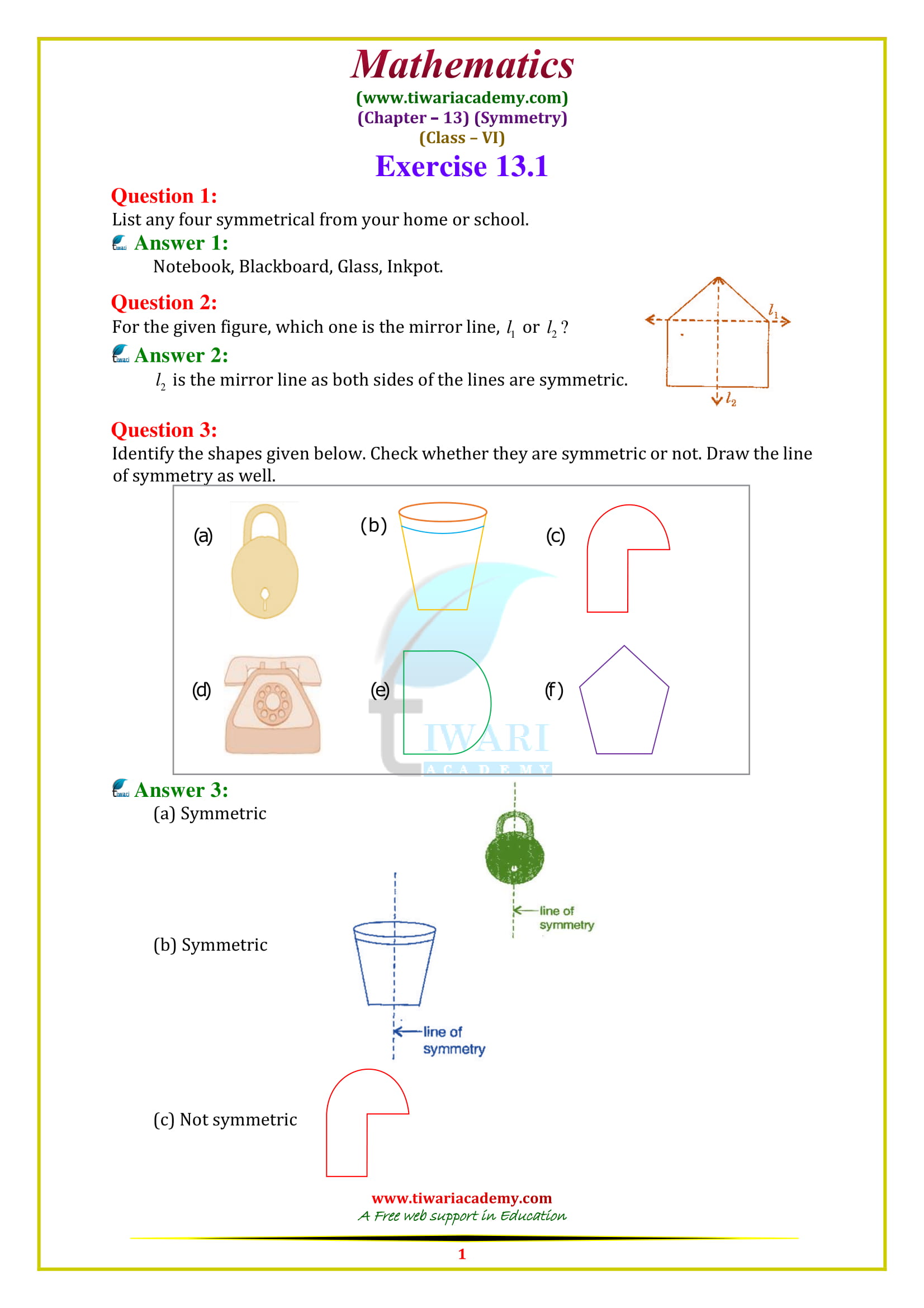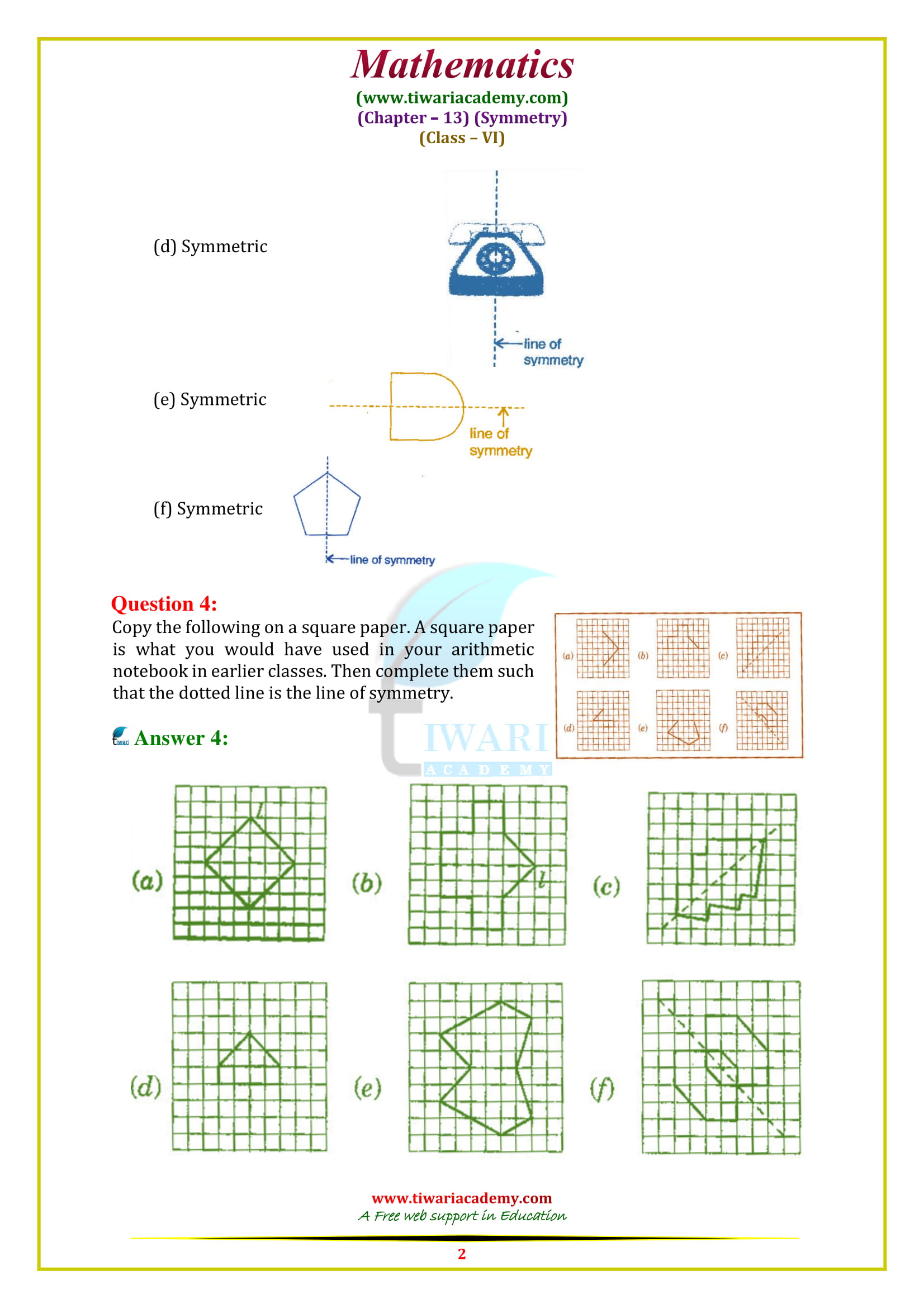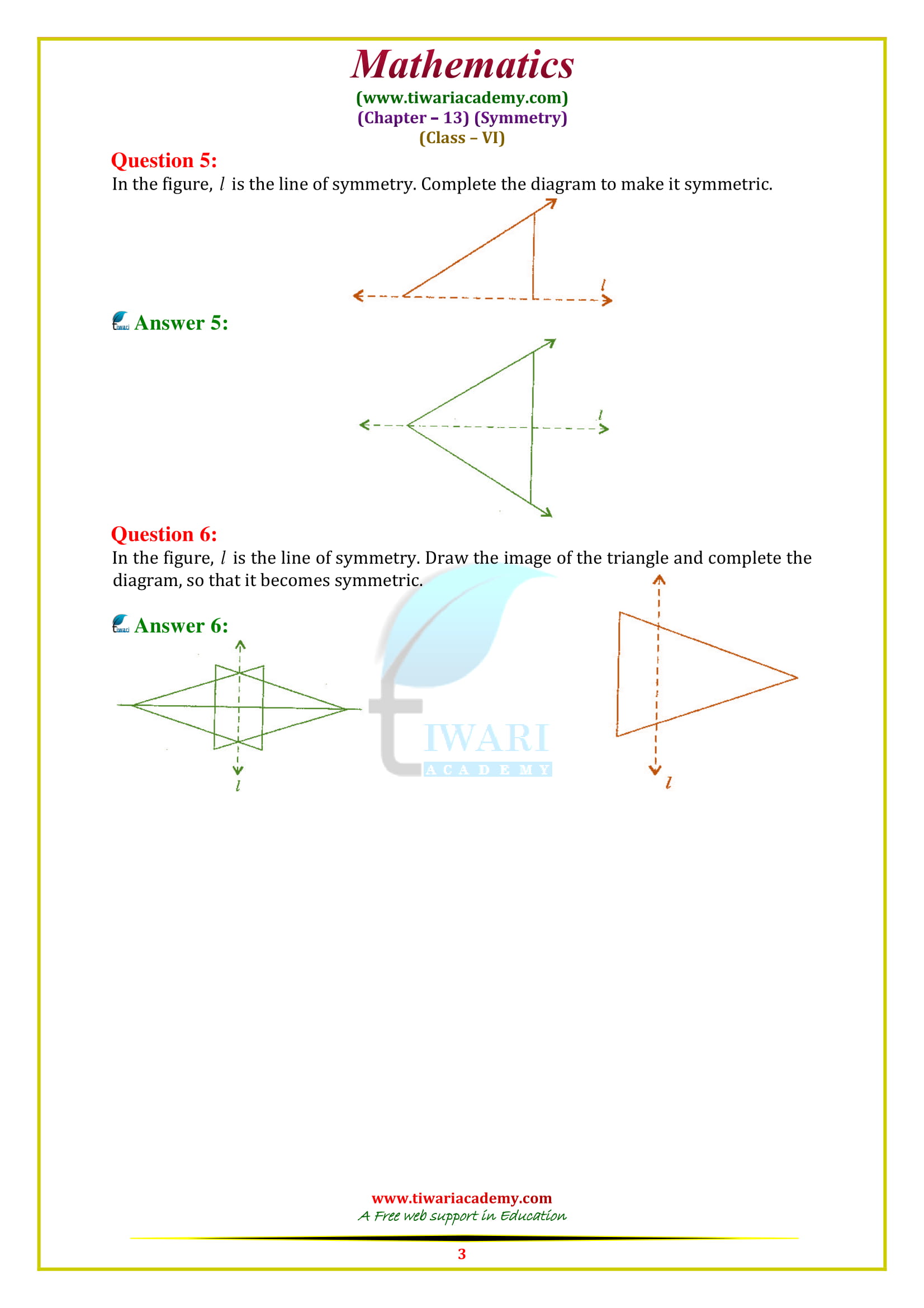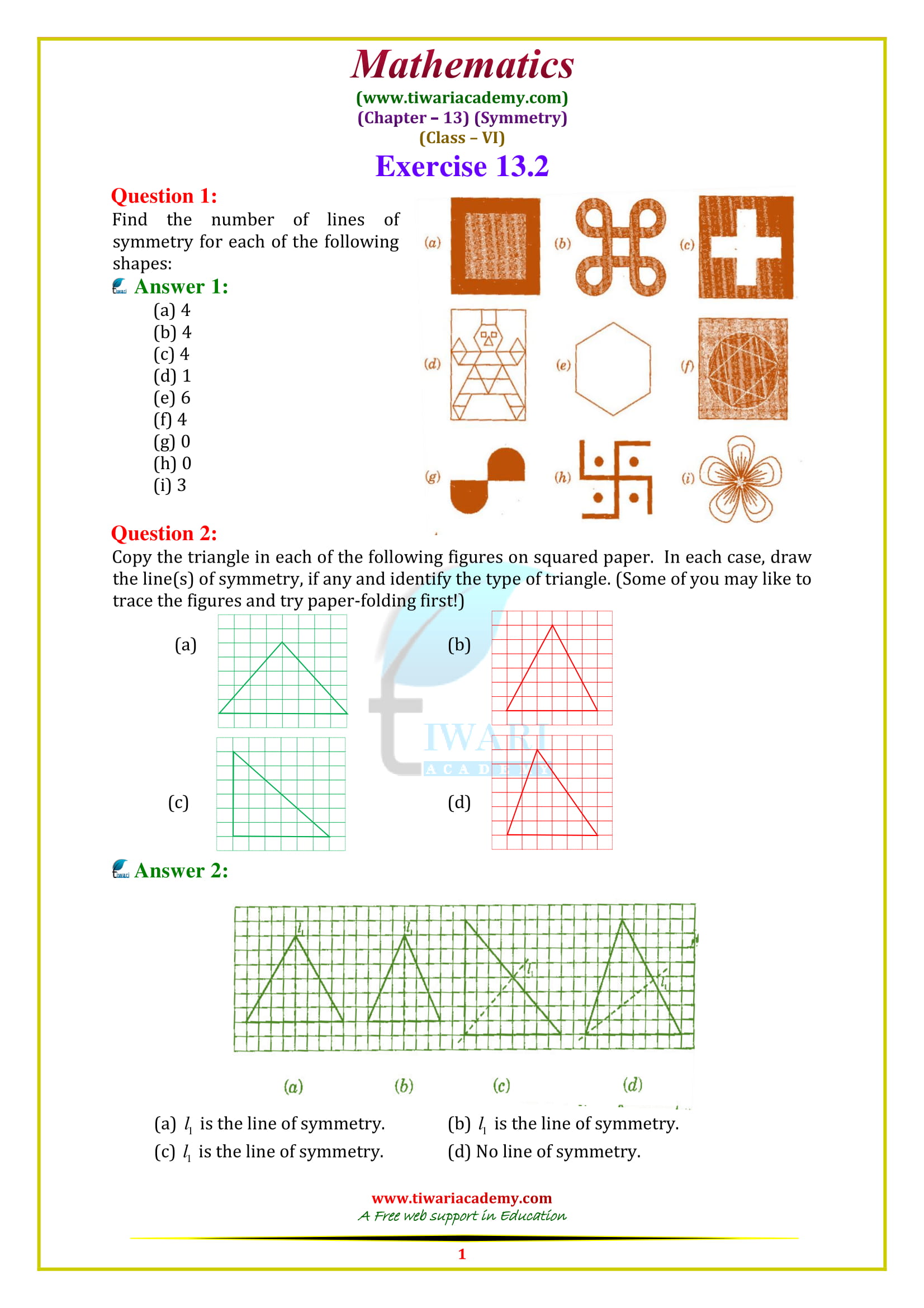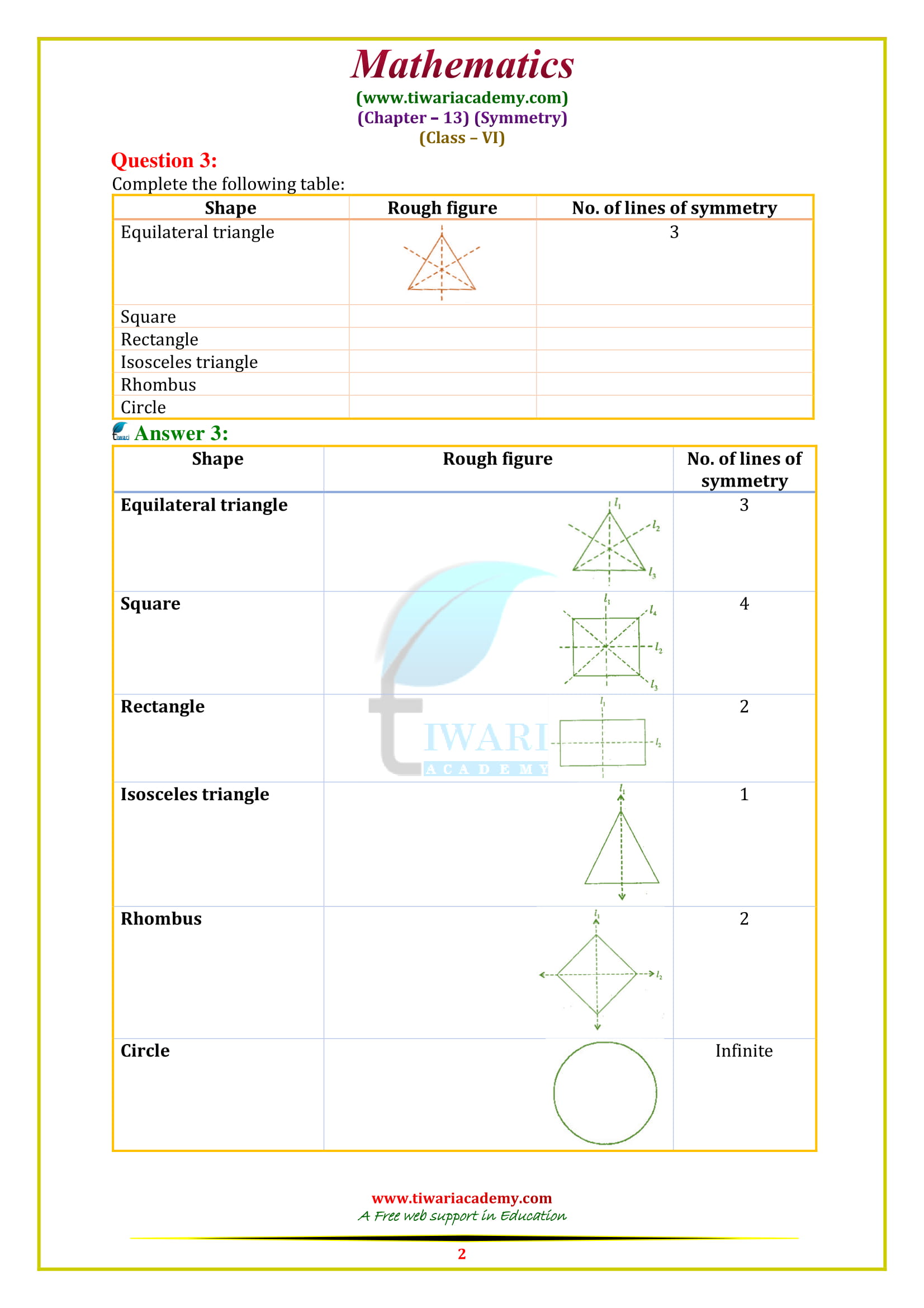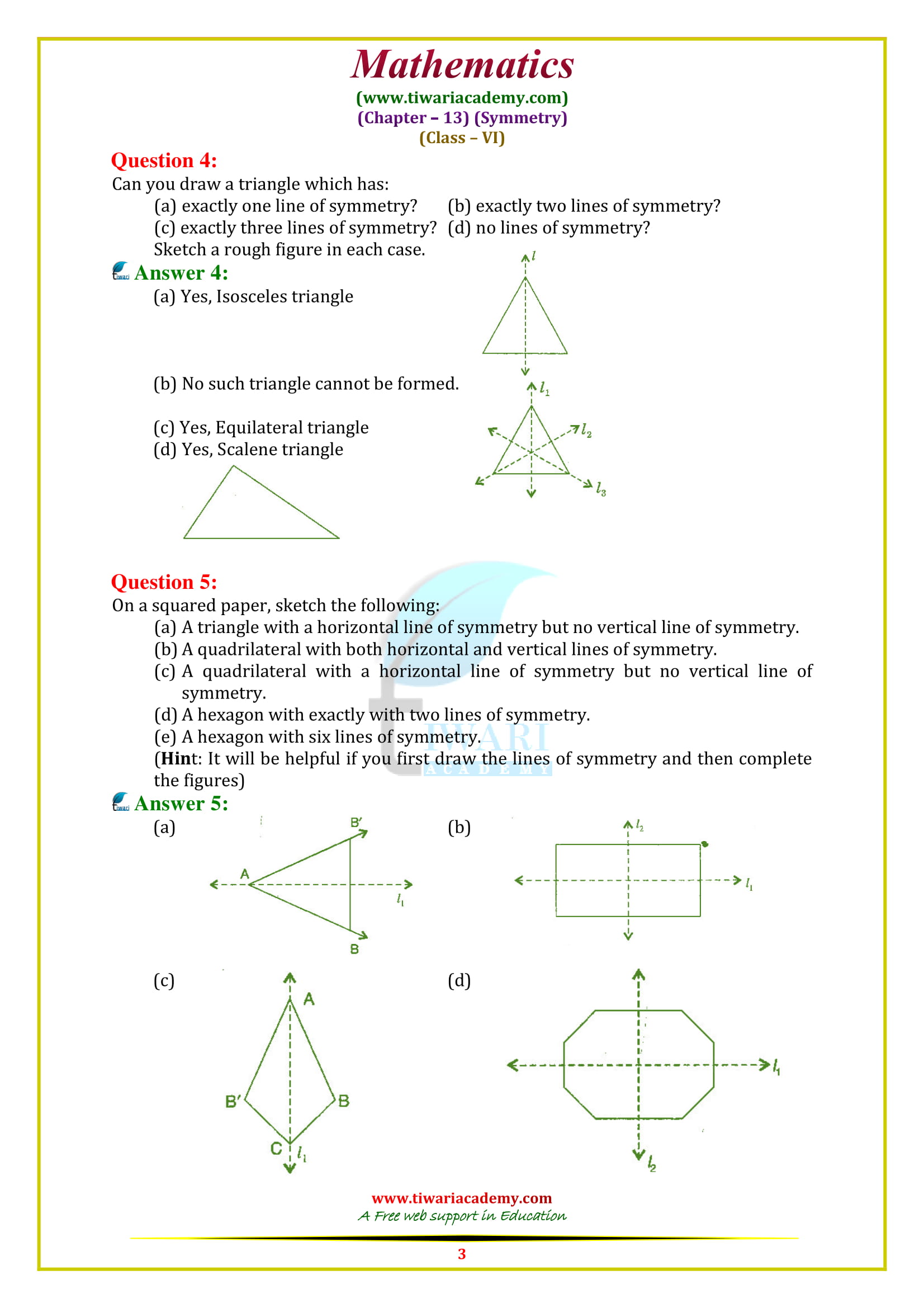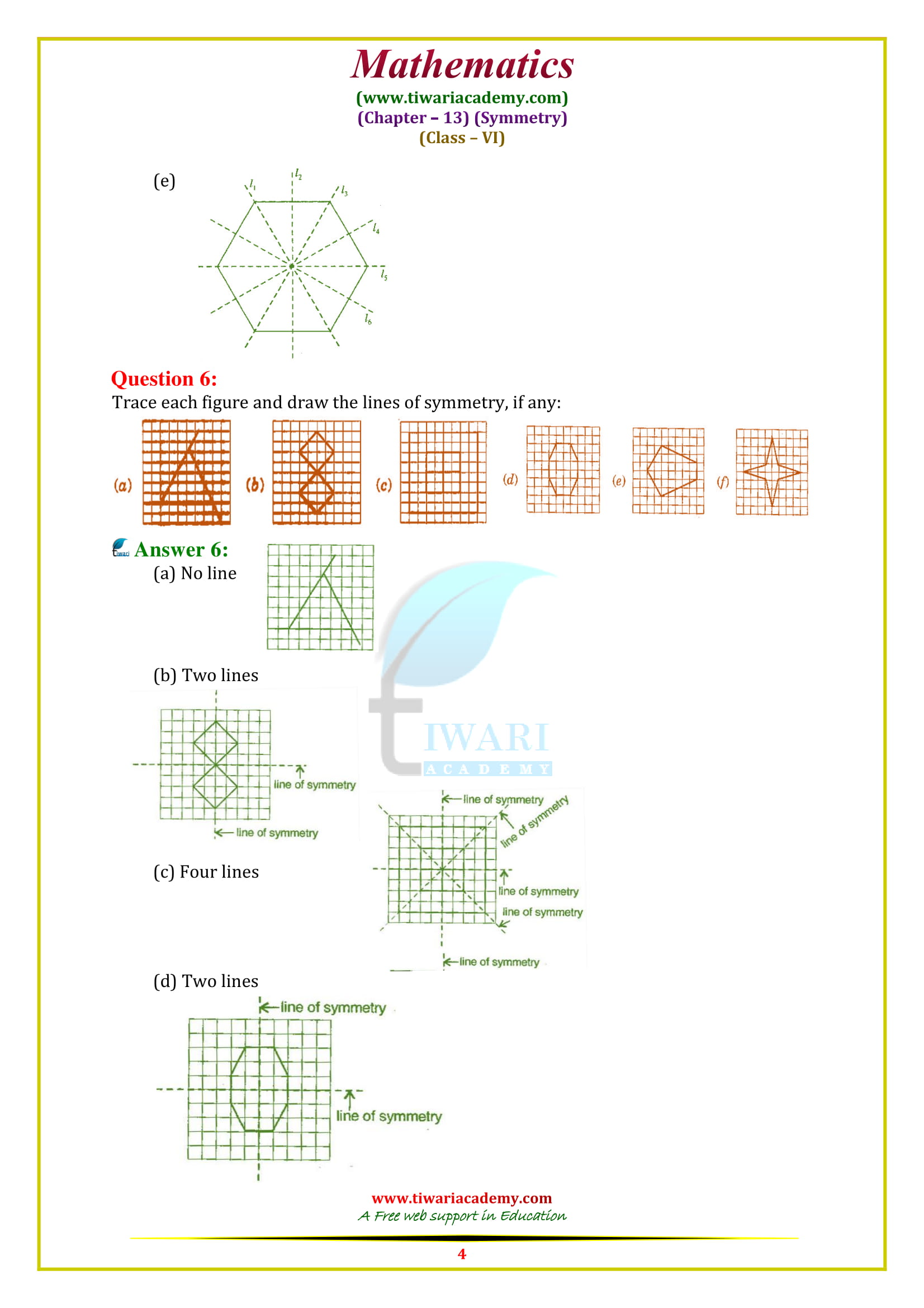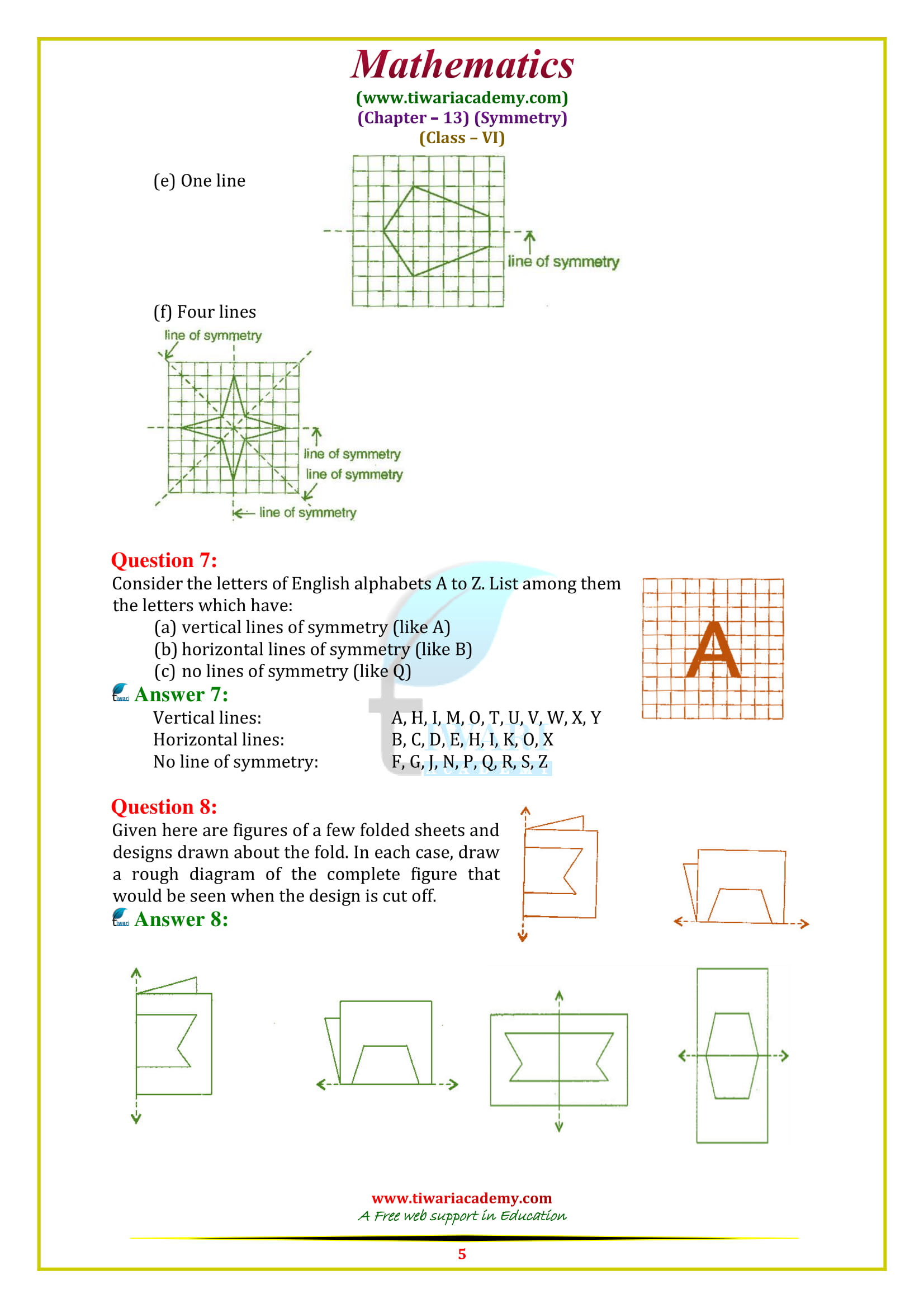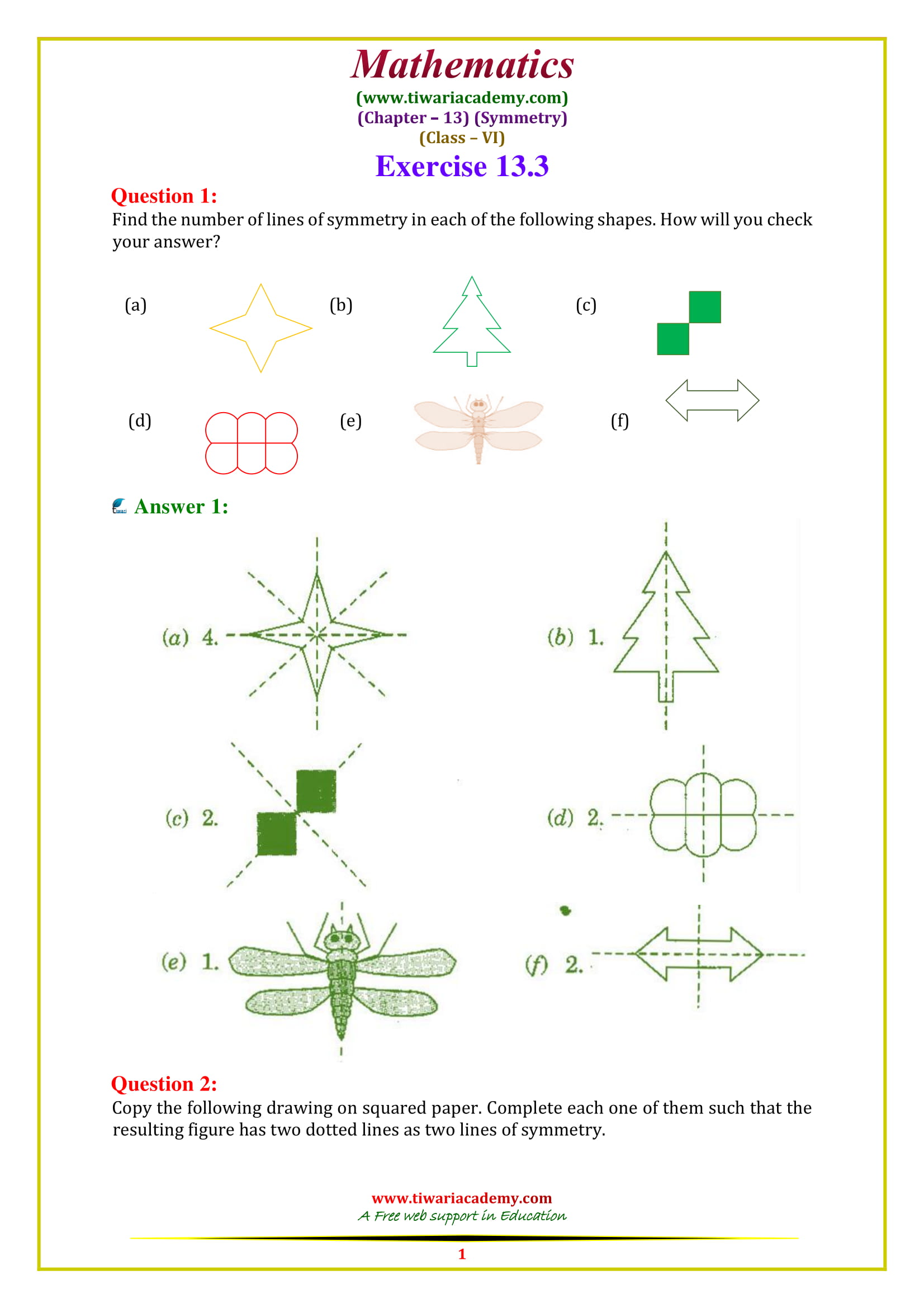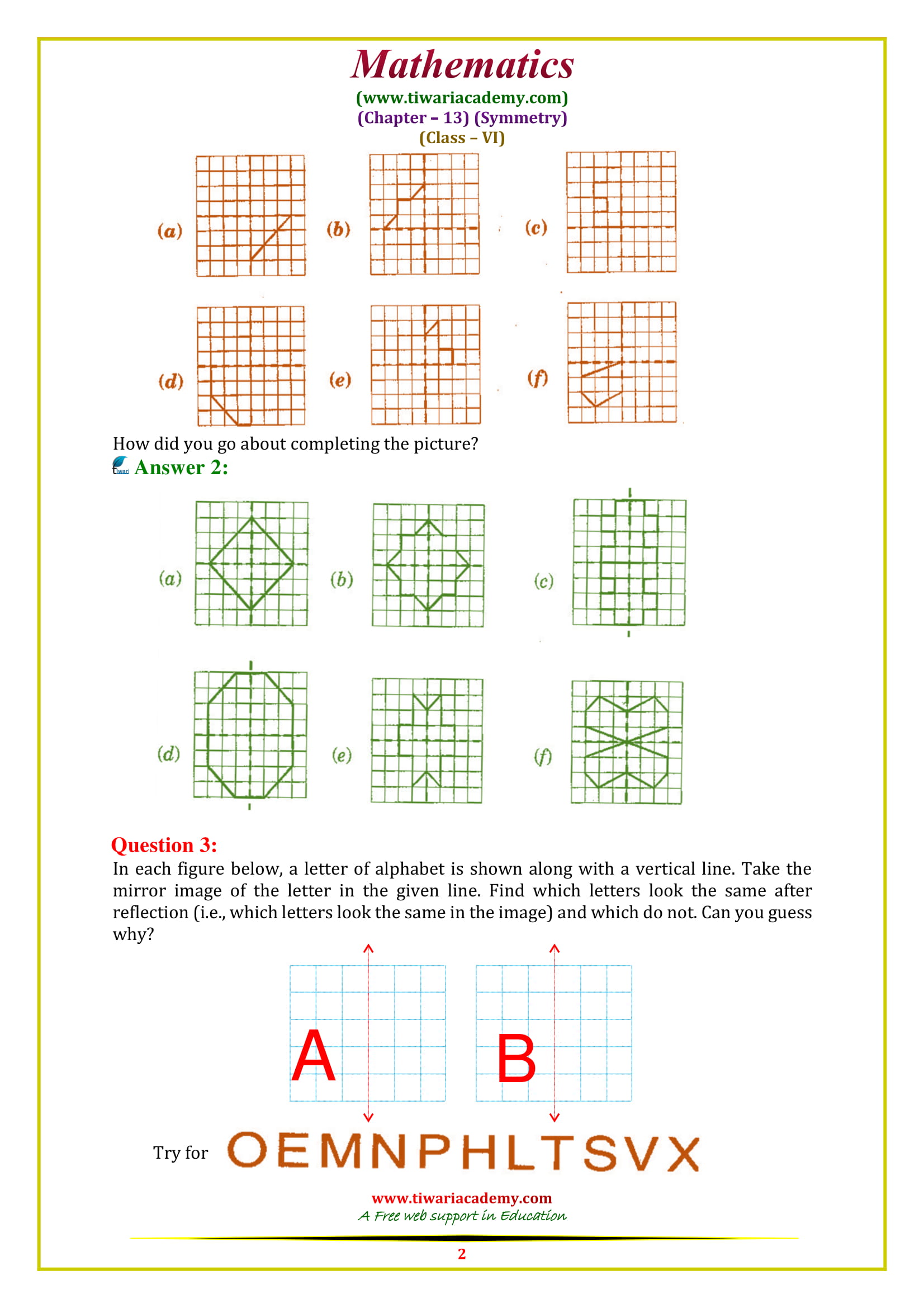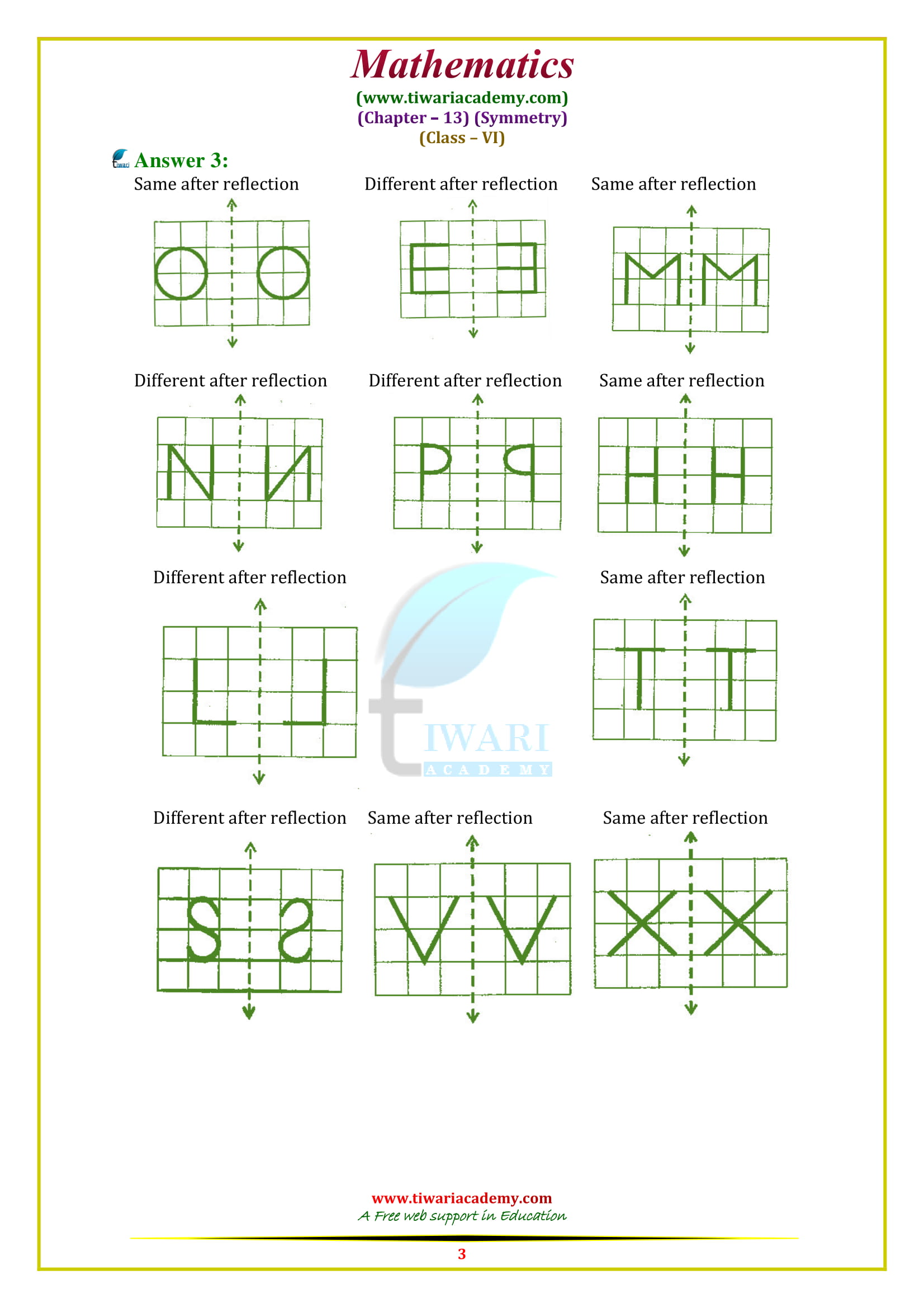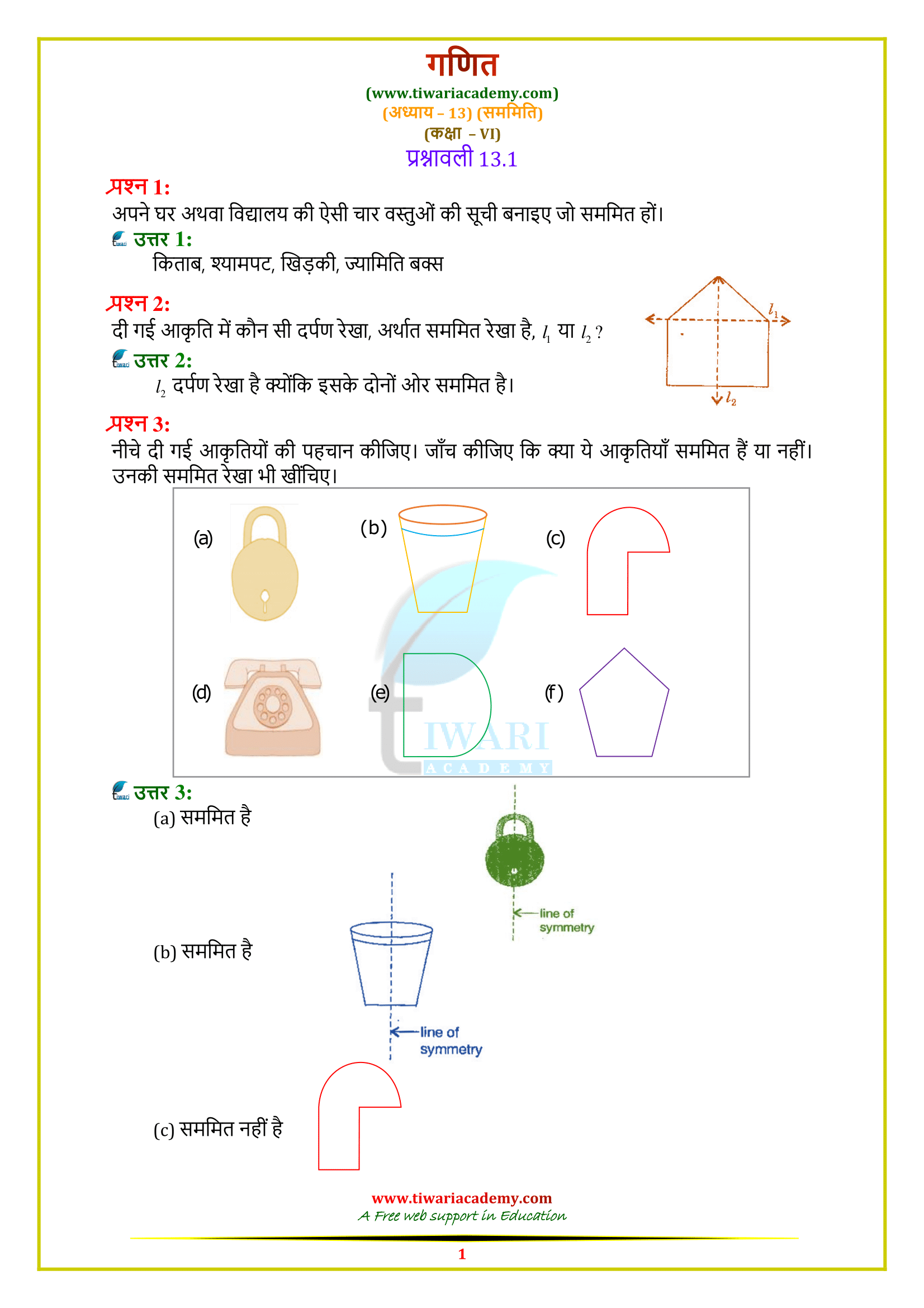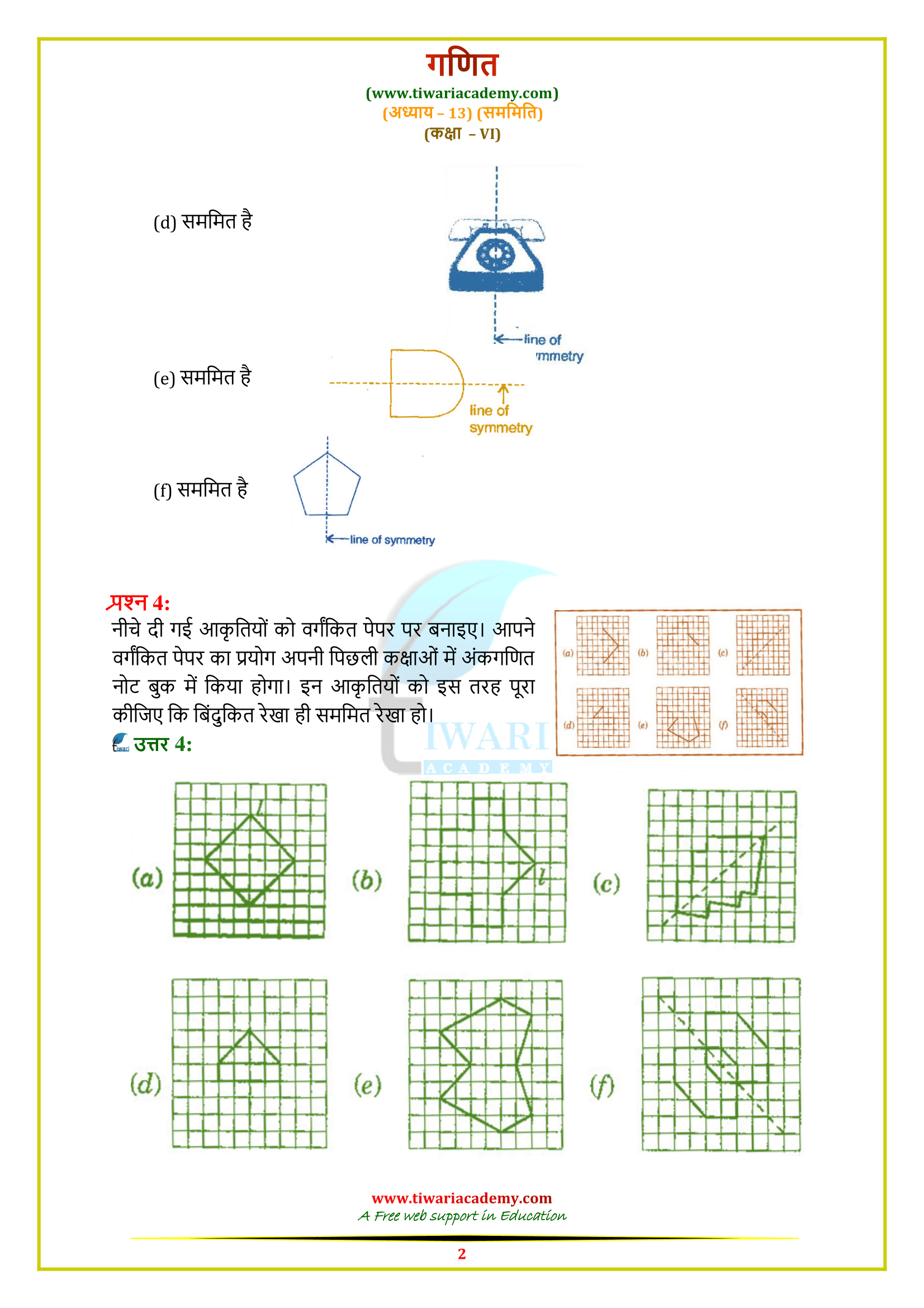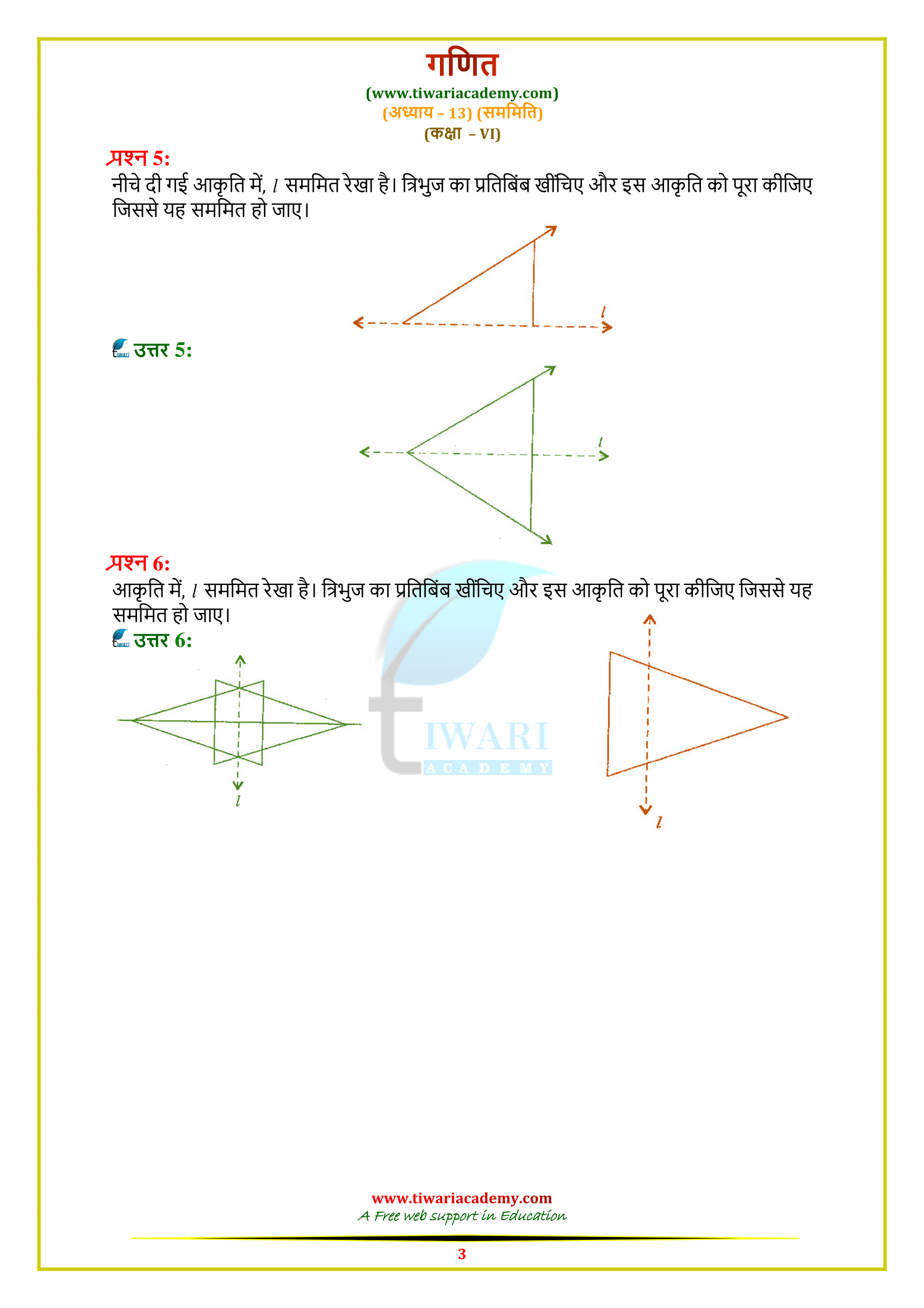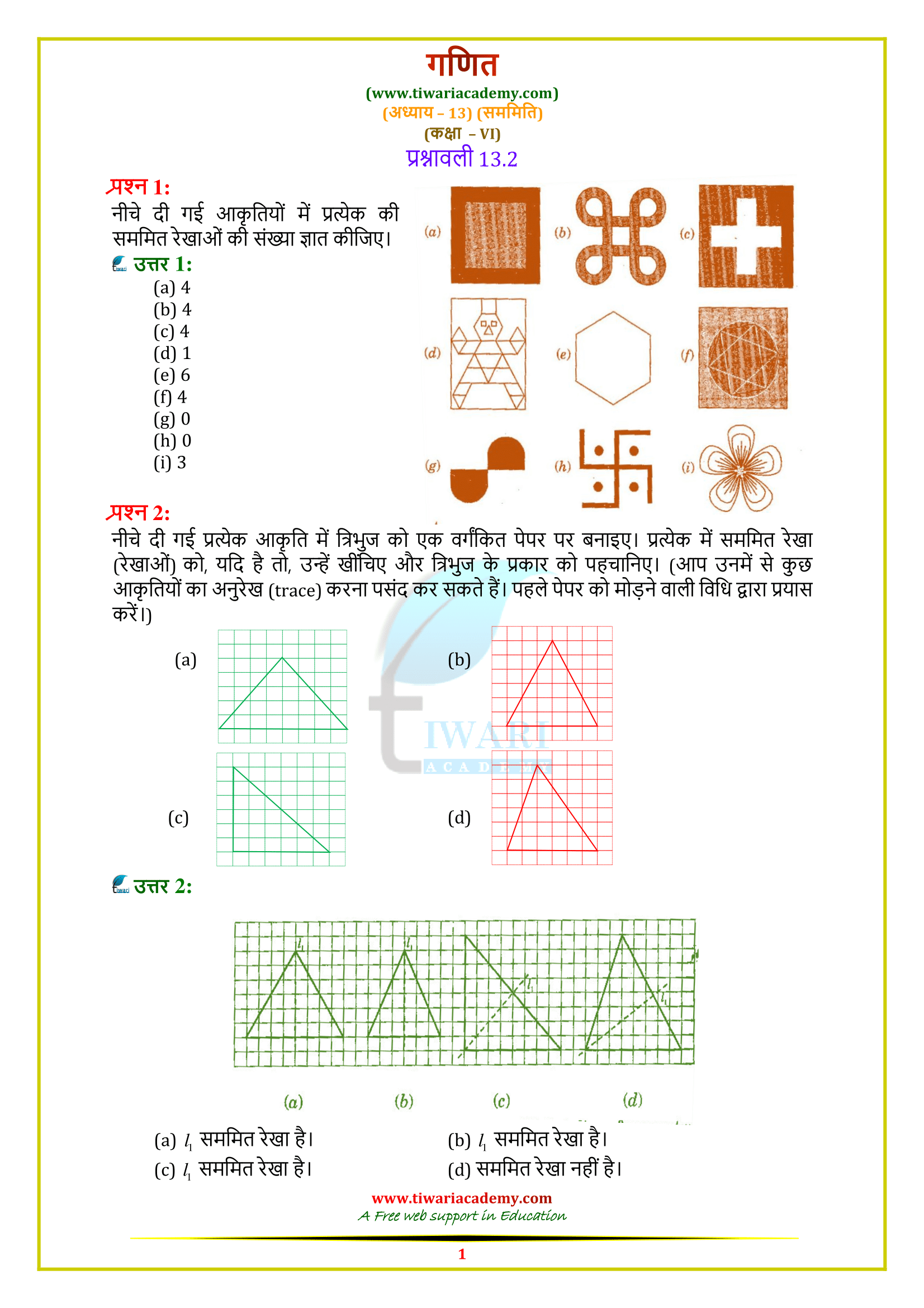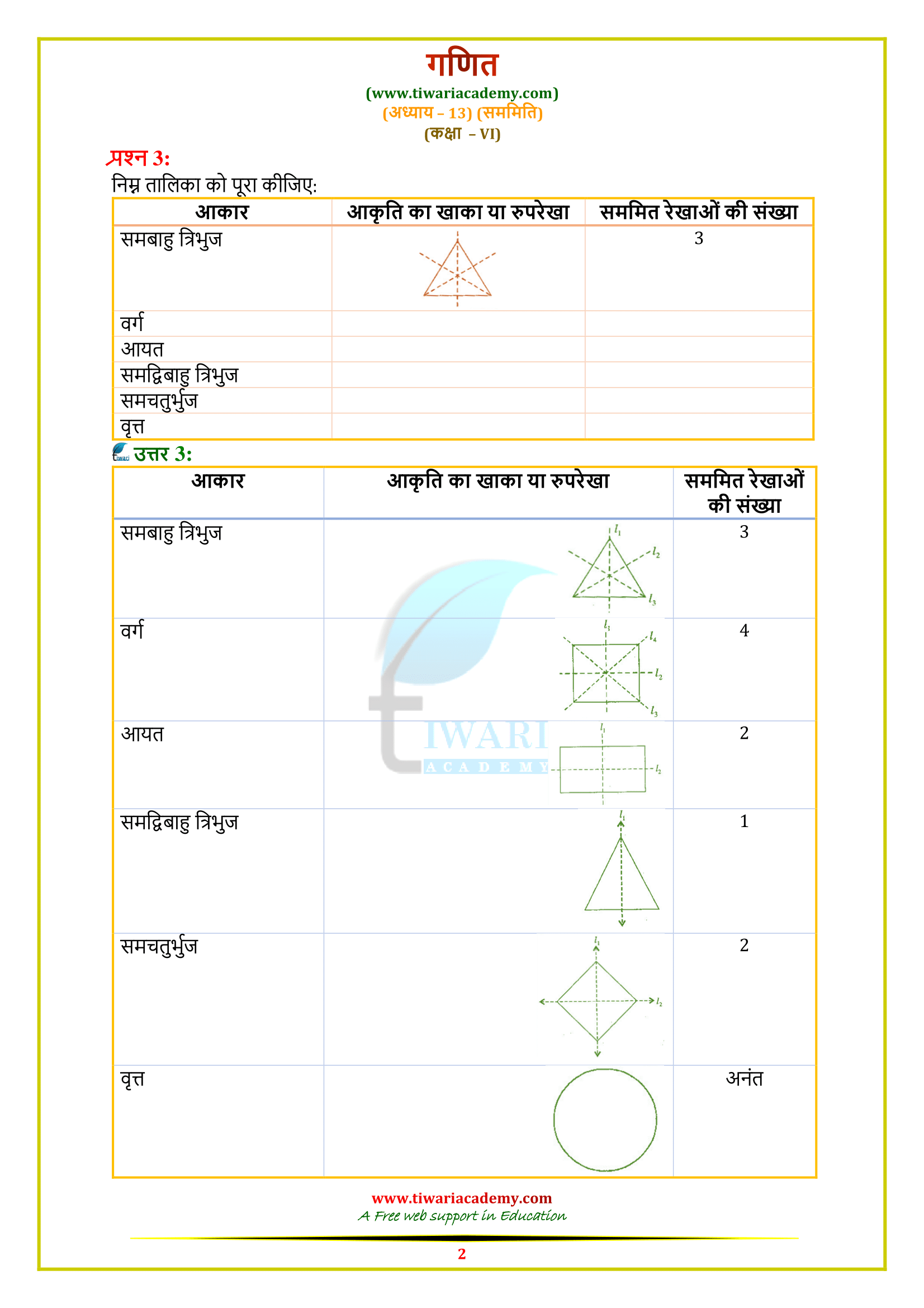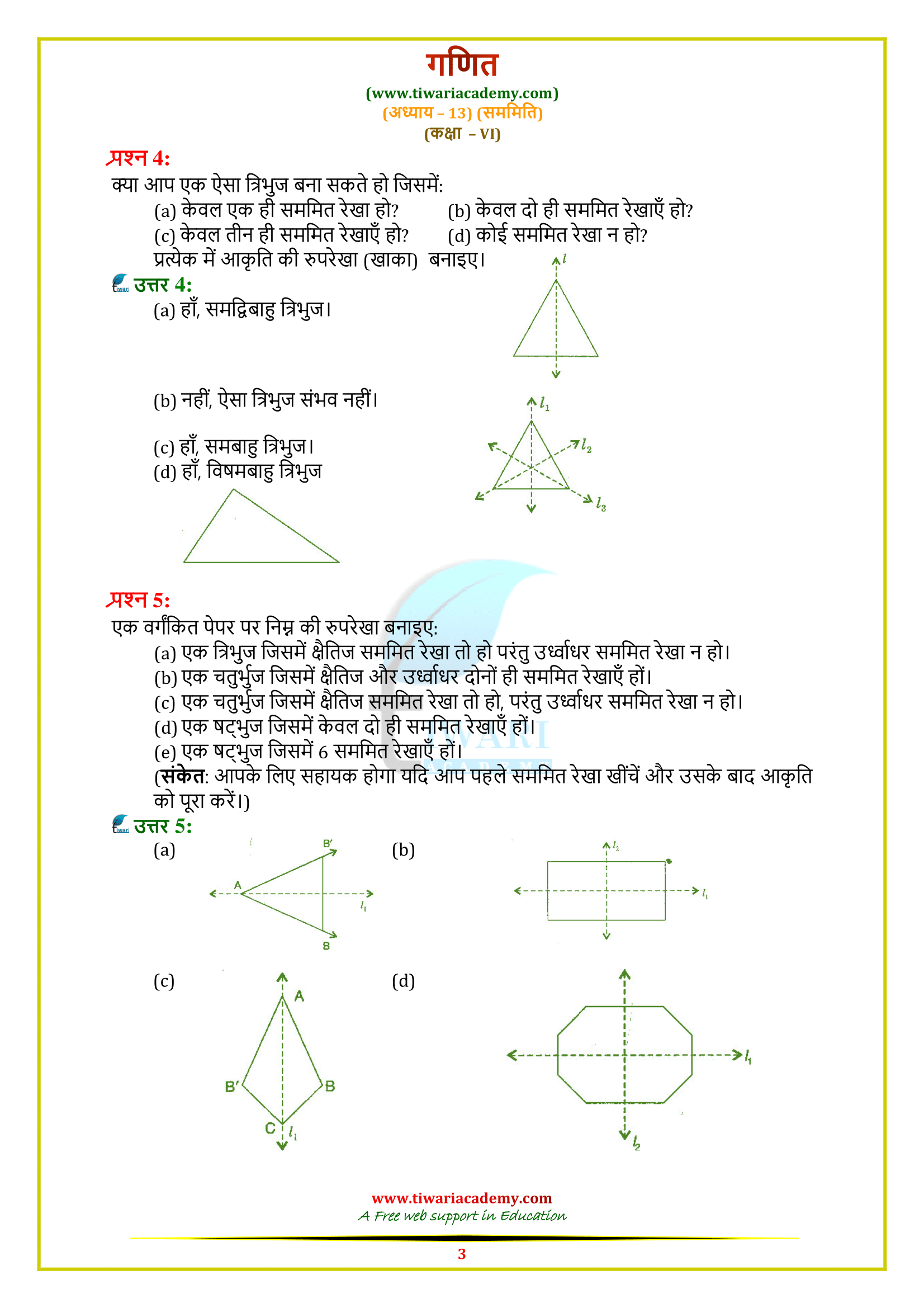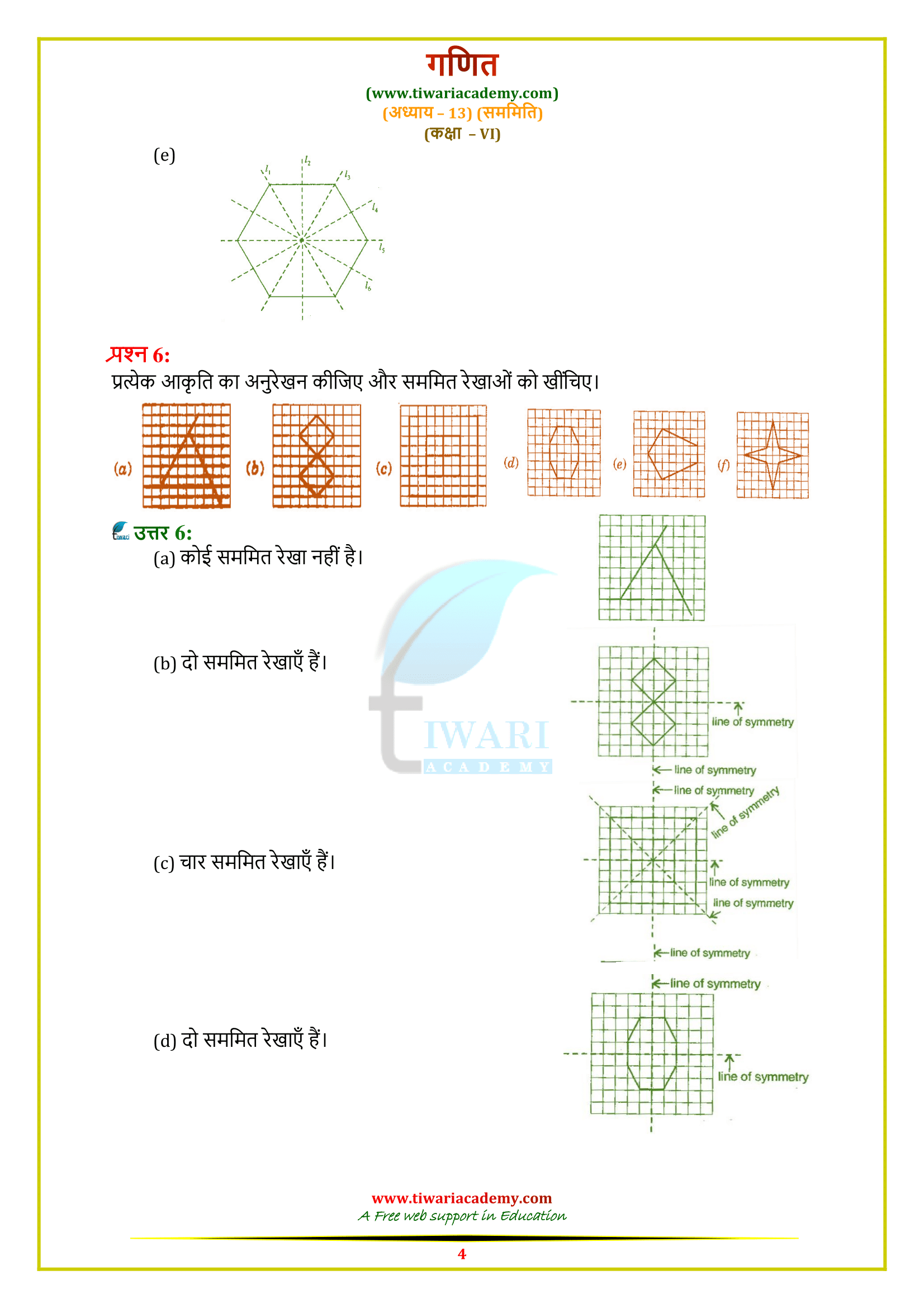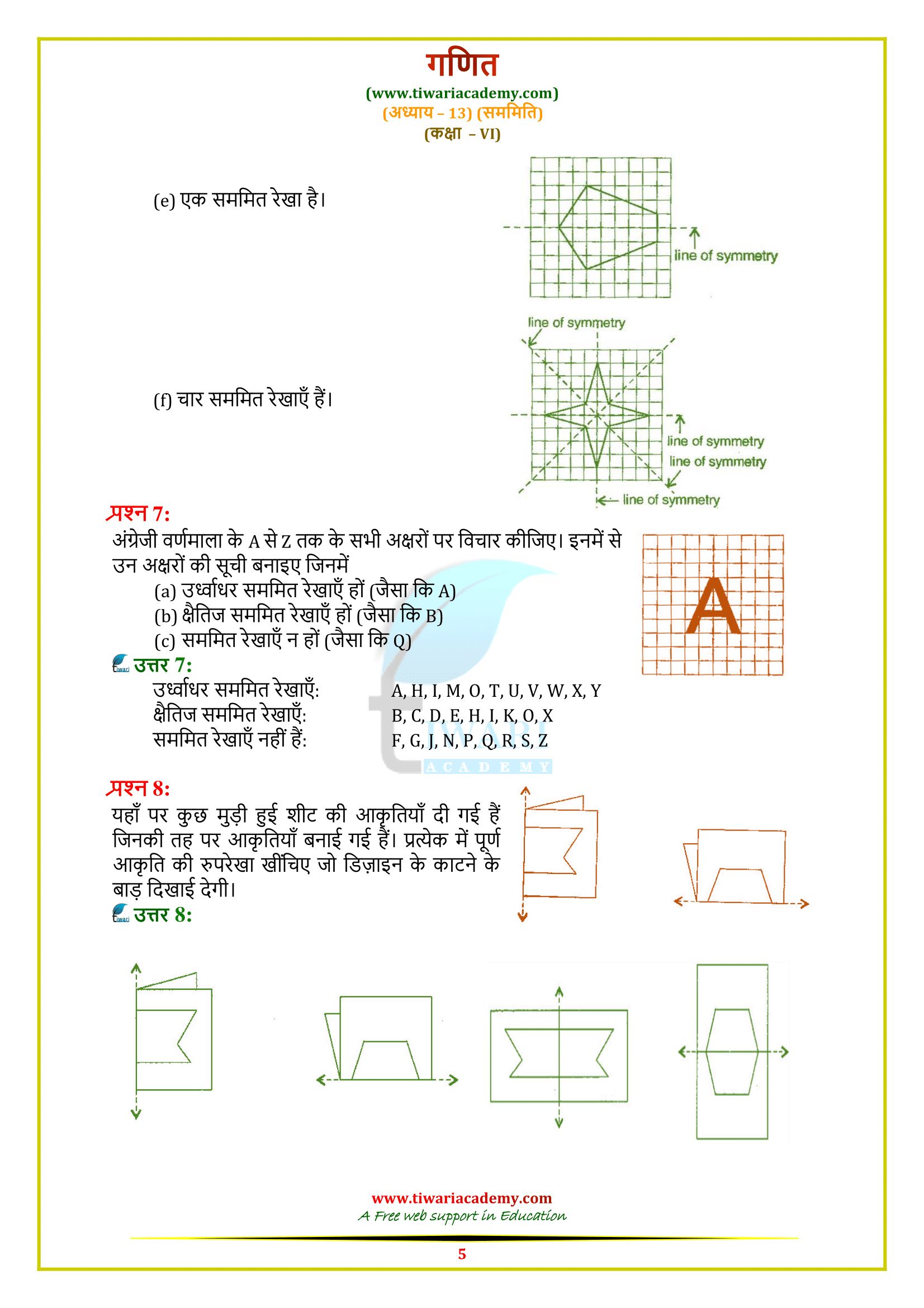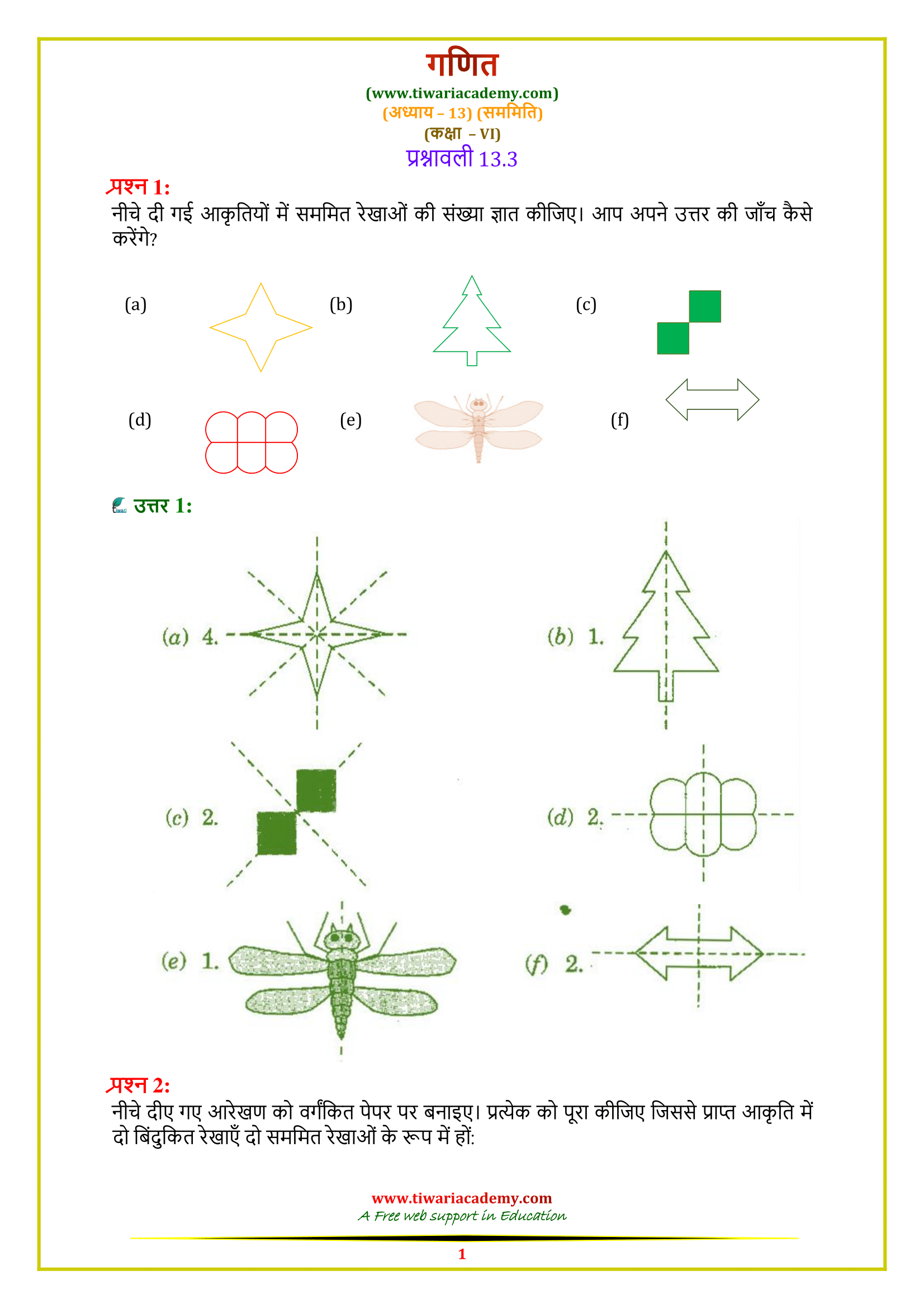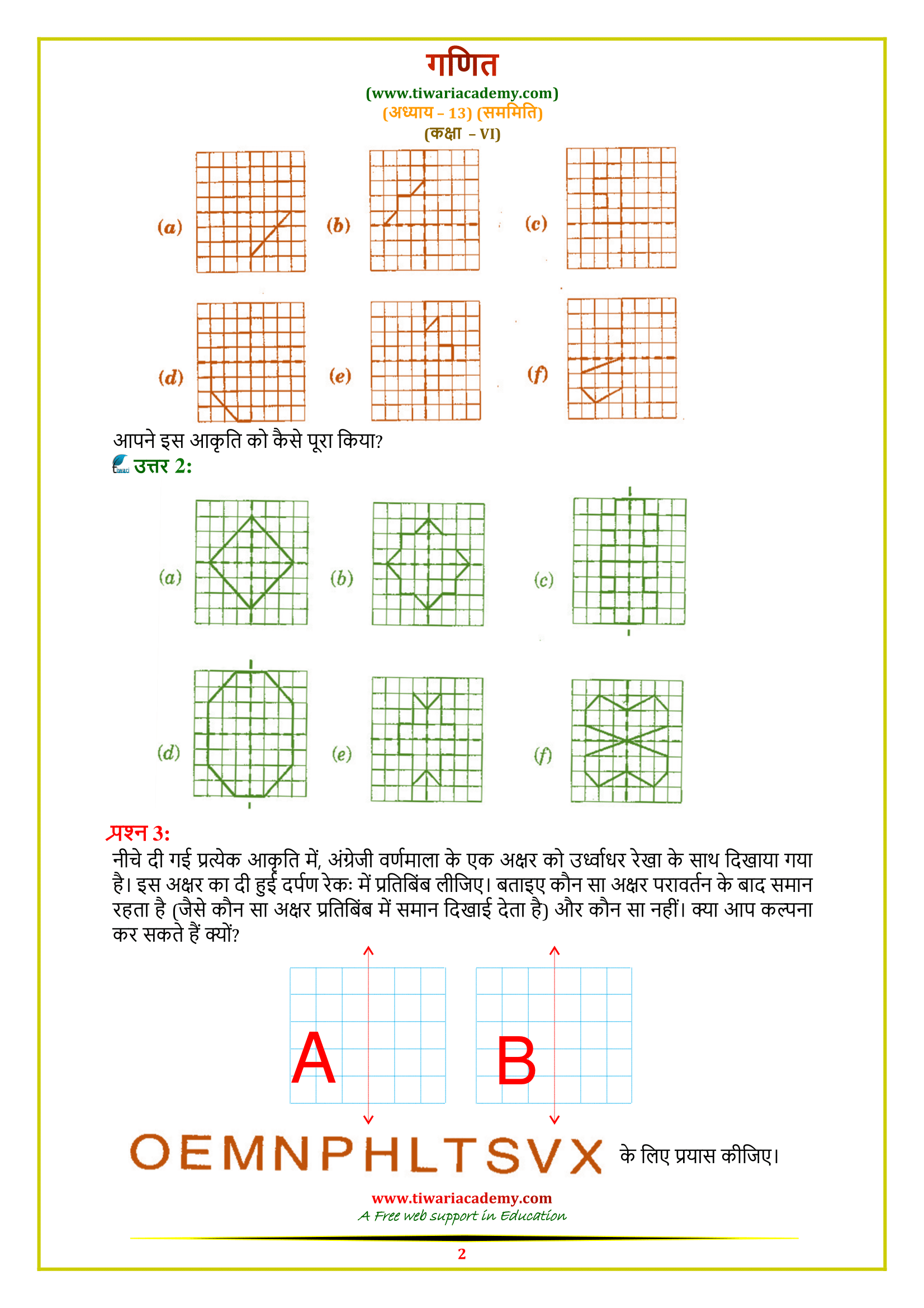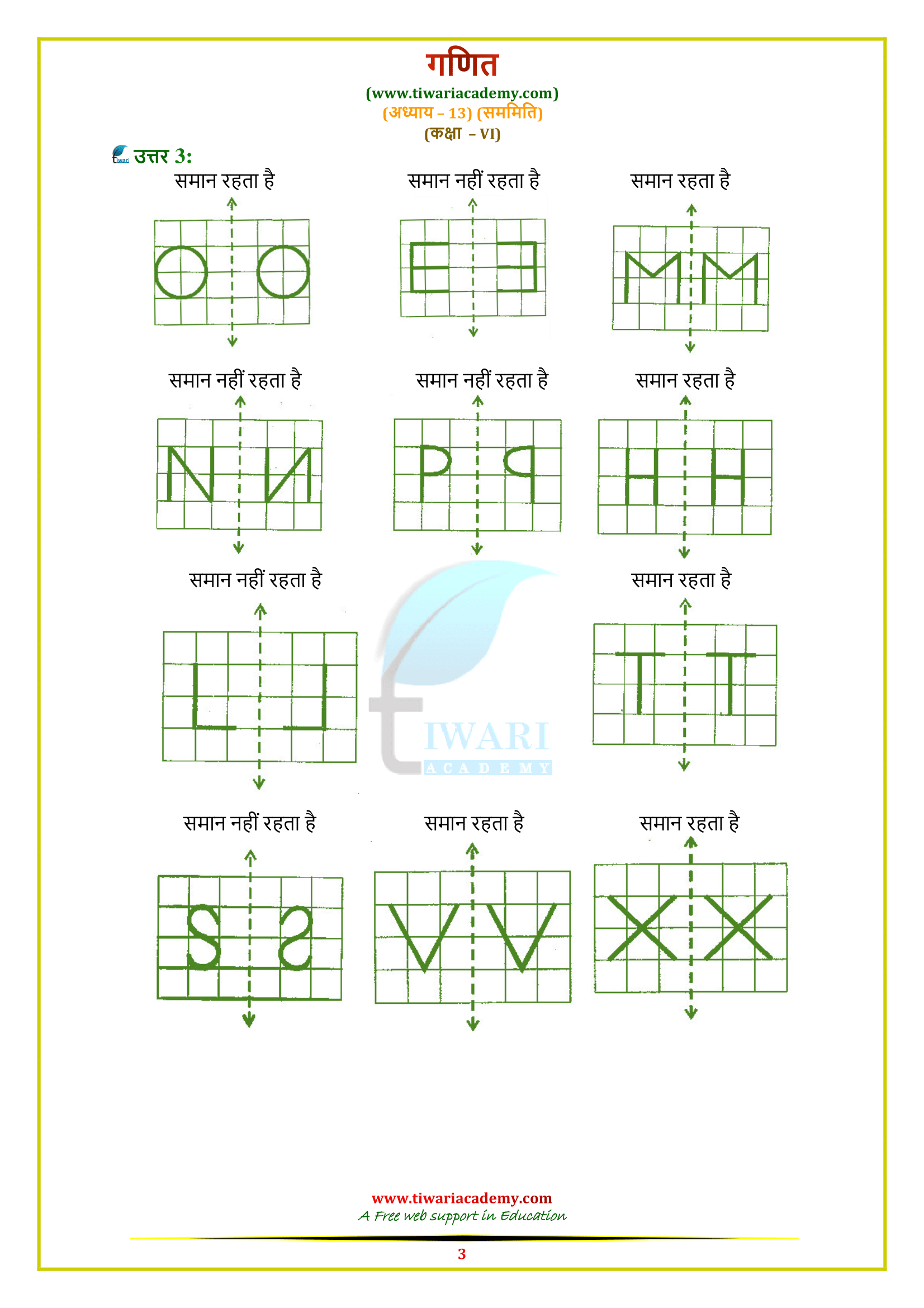NCERT Solutions for Class 6 Maths Chapter 13 Symmetry in Hindi and English Medium updated for CBSE and State Boards. Access the latest Class 6 Maths NCERT Solutions for Chapter 13 on Symmetry. Comprehensive guides in Hindi and English, tailored for CBSE and State Boards, are available at Tiwari Academy.
Class 6 Maths Chapter 13 Solutions in English Medium
Class 6 Maths Chapter 13 Solutions in Hindi Medium
NCERT Solutions for Class 6 Maths Chapter 13
Class VI Mathematics Exercise 13.1, Exercise 13.2 and Exercise 13.3 in English Medium as well as Hindi Medium updated for new academic session based on new NCERT Books. Solutions of Prashnavali 13.1, Prashnavali 13.2 and Prashnavali 13.3 in Hindi Medium PDF file format or view online free. Videos related to all exercises are available fee to use or download for all the students who are using the books on NCERT (https://ncert.nic.in/) official website for 2025-26. NCERT Solutions are in now updated form for the current academic session onward. Download Class 6 NCERT Solutions Offline Apps for offline use.
| Class: 6 | Mathematics |
| Chapter 13: | Symmetry |
| Study Material: | Exercises Solution |
| Mode: | Online Study Material |
| Medium: | Hindi and English Medium |
Download Class 6 Maths Chapter 13 Solutions in PDF
Download NCERT Solutions for Class 6 Mathematics Chapter 13 Symmetry in PDF format. The language of the solution is made easy so that a student of class VI can understand easily. All the solutions are updated for new session based on updated NCERT Books 2025-26. For any query, Feel free to contact us.
About Class 6 Maths Chapter 13
In 6 Maths Chapter 13 Symmetry, we will study about the figures having one line of symmetry, two line of symmetry or many line of symmetry. We will also learn to make the things having line of symmetry.
Symmetry in daily life:
Many road signs you see everyday have lines of symmetry.
The nature has plenty of things having symmetry in their shapes like the pattern of leaf, structure of crabs, a starfish, etc.
The designs on some playing cards have line symmetry.
In a pair of scissors also have a line of symmetry.
On a squared paper, we can sketch the following easily:
A triangle with a horizontal line of symmetry but no vertical line of symmetry.
A quadrilateral with a horizontal line of symmetry but no vertical line of symmetry.
A quadrilateral with both horizontal and vertical lines of symmetry.
Note: The object and its image are symmetrical with reference to the mirror line. If fold a piece of paper, the mirror line becomes the line of symmetry. In this case the image is the reflection of the object in the mirror line. It also can be seen when an object is reflected, there is no change in the lengths and angles i.e. the lengths and angles of the object and the corresponding lengths and angles of the image are the same. However, in one aspect there is a change, i.e. there is a difference between the object and the image.
Important Questions on Class 6 Maths Chapter 13
List any four symmetrical from your home or school.
Notebook, Blackboard, Glass, Inkpot.
What is a line of symmetry?
A figure has line symmetry if a line can be drawn dividing the figure into two identical parts. The line is called a line of symmetry.
How many line of symmetry does a figure have?
A figure may have no line of symmetry, only one line of symmetry, two lines of symmetry or multiple lines of symmetry.
Feel Free to Contact Us
We are working to provide all the users a simplified as well as the best format of the solutions. Hindi Medium solutions for this session are now available to use free, so students can take benefits of these solutions also.
Which topic’s knowledge will students gain after completing chapter 13 of grade 6th Maths?
After completing chapter 13 of class 6th Maths, students will gain the knowledge of the following topics:
- Making Symmetric Figures: Ink-blot Devils
- Figures with Two Lines of Symmetry
- Figures with Multiple (more than two) Lines of Symmetry
- Reflection and Symmetry.
Which exercise of chapter 13 of 6th standard Maths has the highest number of questions and which exercise has the lowest number of questions?
Chapter 13 of 6th standard Maths has three exercises. In the first exercise (Ex 13.1), there are 6 questions. The second exercise (Ex 13.2) has 8 questions. There are three questions in the last exercise (Ex 13.3). So, the second exercise has the highest number of questions and the third (last) exercise has the lowest number of questions.
Is chapter 13 of class 6 Maths take longer time to be solved than other chpaters?
No, chapter 13 of class 6th Maths is not at all lengthy. It is a short chapter. Only three exercises are there in this chapter. Students require a minimum of 5-6 days to complete chapter 13 of class 6th Maths if they give 1 hour per day to this chapter at home.
Is chapter 13 Symmetry of grade 6th Maths challenging for students?
Chapter 13 Symmetry of grade 6th Maths is not at all challenging. This chapter is overall an easy chapter, but few students face a little problem while understanding this chapter. However, the difficulty level of any topic depends on students also. Some students find chapter 13 easy, and some students find chapter 13 tough.
What are some real-life applications of symmetry in chapter 13 of 6th standard Maths?
Chapter 13 of 6th class Maths is very interesting because people can see symmetric objects around them, in their office, at their home, in public places, etc. Some real-life applications of symmetry (chapter 13 of 6th standard Maths) are:
1. Almirah
2. Human Hands
3. Basketball
4. Headphones
5. Butterfly
6. Bee
7. Dog
8. Cat
9. Reflection of trees in clear water and reflection of mountains in a lake.
10. Spider
11. Airplanes
12. Sunflower
13. Peacock
14. Snowflakes
15. Alphabets A, B, C, D, E, H, I, K, M, O, T, U, V, W, X, Y
